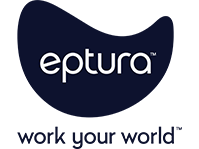
Is your facility receiving visitors each day? How do you allow access only to authorized people? And how do you make your visitors recognizable? It’s quite easy. You can do it by offering them visitors’ passes.
At Proxyclick, we have helped thousands of companies design their badges and learned a few things along the way. We thought it would be a good idea to share a few of these things here, including how to make badges.
The tips you’ll find below are universal, but the majority of examples and screenshots here come from Proxyclick’s ecosystem because we know it the best.
What are visitor badges?
Badges are commonly used in business and educational environments, such as schools, to easily identify visitors. In some organizations (especially with high levels of security), even the employees are obligated to wear badges at all times. It all depends on the company policy.
Visitor ID badges can be valid for a specific period of time, or used just for a single visit, and serve as a great security measure that’ll prevent unwanted visitors from entering the building. It is also a critical way that companies can ensure that everyone who enters the building has a health-screening to prevent the spread of COVID.
A regular badge contains the first and last name of the visitor. Additionally, a visitor passes template can include the name of the host, company name, a picture, a date of the visit, validity code, QR code, health and security icons, visitor type labels, or a wifi code.
What are the benefits of offering badges to your visitors?
For security reasons, your visitors may be obliged to wear name tags at all times.
If there’s no singular entrance and exit point (with an entry gate) it’s quite easy for a stranger to pass through the reception unnoticed. However, if they don’t wear a badge, they’ll be easily spotted by the security staff or other office workers.
By providing your guests with badges, you always know who is who – especially if the visitor’s picture is printed on the badge. And if someone is walking around without a visitor access badge, they probably didn’t check-in at the entrance and shouldn’t be in the building.
Adding a validity date to the badge is also important. It will prevent visitors from using the badge they received in the past to enter the building at another time.
Visitor badges can be easily falsified, so for additional security, you can make them unique by adding a QR code through the dashboard of a visitor management system. Only after scanning the QR code at the reception will the visitor be allowed to pass.
Most IT experts agree that this mix of physical and digital measures is needed for optimal security. In one survey of over 1000 IT and security professionals, 97% stated that for physical security to be effective, it must be integrated with digital security.
Building a professional image of your company
Printing out badges at the reception enables you to make a great impression on your visitors. The badge may contain the colors and logo of your company, as well as other useful information.
Many of our clients include a guest Wi-Fi code and the name of the host on the badge, to make the visit as smooth as possible. As visitor management expert Lee Odess stated:
The right badge will strike a balance of both secure and practical, which will encourage adherence. It will also maintain a professional image that shows company concern for safety as well as an emphasis on organization.
Pro tip: Getting the badges printed automatically as soon as the visitor checks in is a fantastic way to create a modern image of your company.




